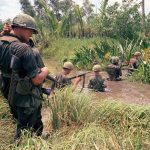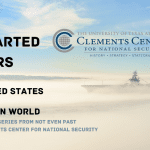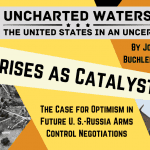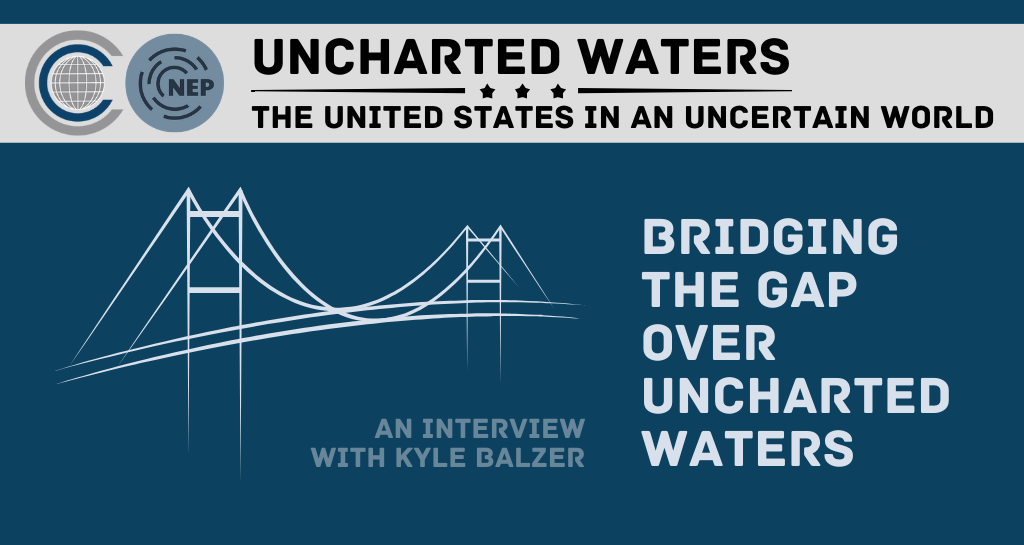
From the editors:
Through our “Uncharted Waters” article series, Not Even Past has been exploring the history of U. S. international relations, examining understudied historical episodes in an accessible, engaging manner. Uncharted Waters taps into the wealth of knowledge produced by scholars affiliated with the University of Texas at Austin’s Clements Center for National Security. But what do these scholars actually do? What kind of research do they conduct, and to what end?
To find out, we interviewed Kyle Balzer, a postdoctoral fellow at the Clements Center and an affiliate of the America in the World Consortium, a grouping of like-minded institutions to which Clements belongs. In response to our questions, Kyle reflects on what it means to write history with an eye towards influencing the course of American national security policy; he also discusses his own policy-relevant research project.
Not Even Past: Both the Clements Center at UT Austin and the America in the World Consortium as a whole dedicate themselves to “bridging the gap” between academic scholarship and public policy: they facilitate conversations between scholars and policy professionals, and they also encourage scholarly endeavors policy practitioners find useful. As a historian, how do you think about your relationship with contemporary policymakers? How do you and your colleagues build bridges between past and present?
Kyle Balzer: I think that it is essential for historians to explore issues and questions of interest to policymakers. As a master’s student, I read The Power of the Past: History and Statecraft—a collection of essays edited by [historians] Hal Brands and Jeremi Suri. Contributors like [historian and former National Security Council member] William Inboden, [political scientist and former NSC member] Peter Feaver, and H. W. Brands [historian and father of Hal Brands] make clear that policymakers’ understanding of history shapes their conception of the world and America’s role in it. To make sense of a dizzying array of daily challenges, policymakers employ historical analogies. Since they barely have time to read historical works, policymakers must rely on the intellectual capital they enter office with. After reading this volume, I concluded that historical scholarship could strengthen policymakers’ historical awareness before they enter government.
Building a strong historical sensibility among the next generation of practitioners will be critical. I think historians are great at diagnosis and asking the right questions, which is probably the most important part of policymaking and strategic analysis.
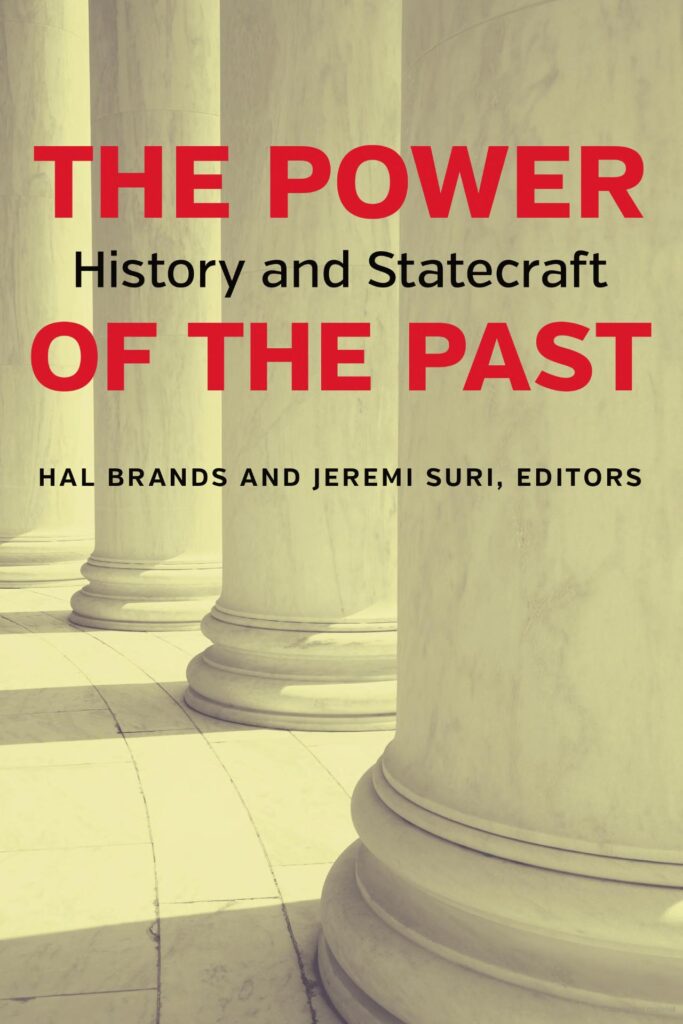
NEP: You recently chaired a panel of historians at AWC’s annual Young Scholars’ Conference. Officially, the conference theme was “What Now? Updating Great Power Competition After the Russian Invasion of Ukraine”; several speakers focused on contemporary U.S.-China rivalry, which also loomed large over the conference as a whole. It was therefore interesting to note that your panel covered far more than just Russia and China. Presenters focused, for example, on the history of industrial raw materials and on antecedents to Brexit.
All of this raises an interesting question: how big is the “gap” between academic interests and policy priorities? How do you reconcile the differences between them? Do those differences cause friction, or do they serve to broaden perspectives on both sides?
KB: I think the gap is certainly closing, or has already been closed, as [historian] Francis Gavin recently wrote in Texas National Security Review. There are communities popping up like the America in the World Consortium and Bridging the Gap that are championing the study of policy-relevant history. As a graduate teaching assistant, I sensed undergraduates’ excitement for issues of policy, strategy, statecraft, and diplomacy. There just needs to be a forum for students excited about diplomatic and military history to pursue their interests. Places like the Clements Center are filling that role for the next generation of practitioners and academics.
Regarding the conference, Ayumi [e. g., Ayumi Teraoka, Kyle’s colleague and an AWC postdoctoral fellow at the Clements Center] and I wanted to organize it around a big question, one that had many layers and components. As to the conference’s theme, we certainly can’t provide a definitive answer to the question of “What Now?” But scholars can help illuminate the questions that need to be examined. So, the historical competition over industrial raw materials—we read in newspapers every day about the struggle for access to rare earth minerals—will be a lasting policy issue but will have a degree of novelty to it. Something like Brexit, which will impact London’s capacity to implement “Global Britain,” is a pressing matter considering Britain’s historical position as a vital maritime ally of the United States. The United States and Britain have traditionally served as a maritime combination to check continental powers. The contest between maritime powers and land powers is enduring.
NEP: Your own research focuses on nuclear warfighting, a topic with obvious (and ominous) contemporary significance. Friction between the U.S. and China, Russia, Iran, and North Korea—all of which possess or are developing nuclear weapons—frequently serves to remind us that we still live in a nuclear-armed world. To what extent have current events influenced your project? Do you find yourself compelled to look for lessons for today, or do those lessons seem obvious to you when you conduct research or scan headlines?
KB: I do think there are lessons that can be drawn from our nuclear past. The historian Marc Trachtenberg wrote as early as 1990 that American society exhibited a kind of nuclear amnesia. Even then, with the Cold War just winding down, he already sensed that Americans’ image of Cold War nuclear dynamics was deeply flawed—reflecting the false assumptions that nuclear war was always unthinkable and nuclear weapons were never considered usable.
Thirty or so years later, I think Trachtenberg’s initial fears have only grown amongst historians working on the nuclear past. It’s essential that we draw the right lessons from Cold War nuclear history, as we have already seen President Biden rely on his understanding of the Cuban missile crisis to make sense of deterrence and nuclear signaling in regards to Russia’s brutal assault on Ukraine.
NEP: Recent U.S.-China rivalry (and, to a lesser extent, U.S.-Russia rivalry) has encouraged some scholars and policymakers to draw comparisons between current events and the Cold War past. As a historian of the Cold War, can you explain why the second half of the 20th century has become the focus of so much policy-relevant historical research? Is there value in the suggestion that we’re living through a second Cold War?
KB: The Cold War was probably America’s most intense experience with long-term competition, certainly its most recent, so I think that is why scholars frequently draw from that history. I think there are enduring features of great-power rivalry that transcend time, space, and specific actors. The Soviet-American strategic arms competition underscored a fundamental trait of long-term competition that shows up throughout history: competitors will abide by distinctive strategic logics that clash with each other in striking ways. The form in which their strategic approaches diverge reflect the unique national styles and historical legacies of the actors involved. American and Chinese strategic analysts will mirror-image each other at their own peril, as U. S. estimators did in assessing the Soviet strategic nuclear posture in the first half of the Cold War. It took some time for people like James Schlesinger [who served as CIA director under Richard Nixon and then as Secretary of Defense under both Nixon and Gerald Ford] to come along and improve our analytic methods, providing better strategic forecasts and actionable diagnoses of Soviet behavior.
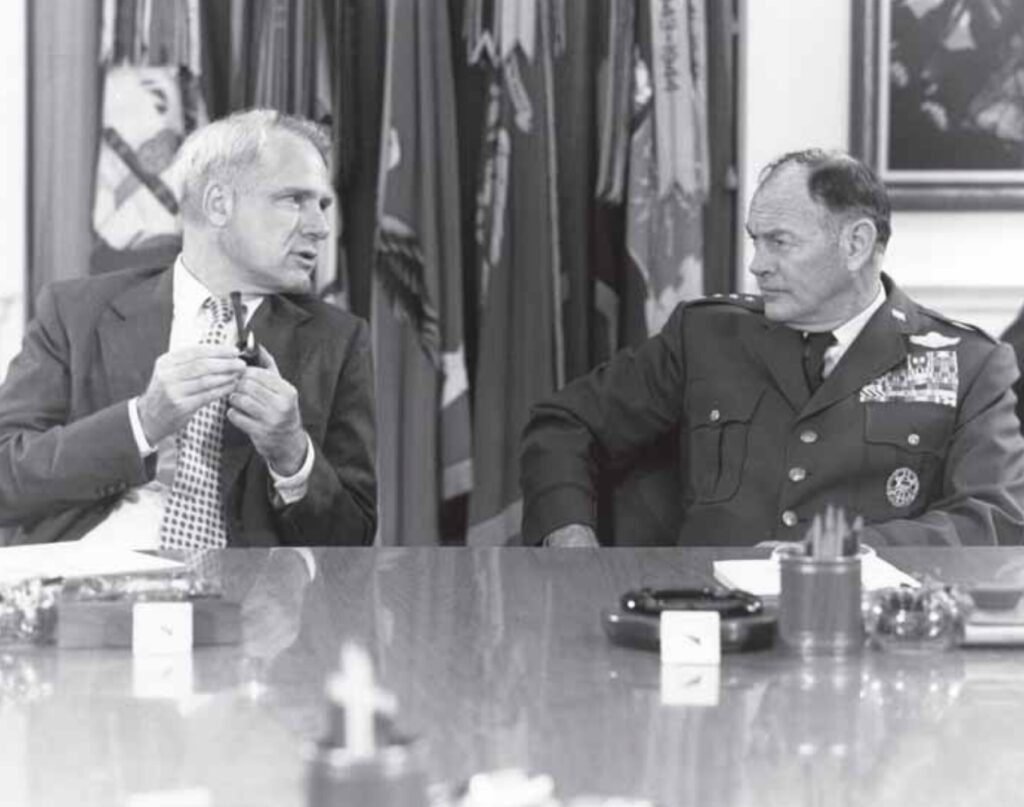
A second fundamental trait of great-power competition—which the Cold War underscores—is the pressing need to understand your opponent’s behavioral dispositions so you can array your comparative strengths against the opponent’s distinctive vulnerabilities. An understanding of historical legacies and geography is crucial to assessing an adversary’s strategic outlook.
NEP: In another article recently published in the Texas National Security Review, Francis Gavin urged policy-oriented scholars to question long-held assumptions, citing as an example a case in which he had questioned some of his own. “Was I annoyed I had to update my beliefs, change my priors? You bet,” he wrote. “Was I smarter for it? Also, you bet. Good scholarship,” Gavin concluded, “can often be vexing.”
Have you ever been confronted by an unexpected discovery or a new interpretation that forced you to “update your priors”? How and why did this happen, and what insight did you gain as a result?
KB: In my own work on James Schlesinger and nuclear strategy, I did not anticipate arriving at my final conclusions at the outset of the dissertation process. As a masters student, I found the work of the theorists of the “nuclear revolution” convincing. Essentially, these theorists argue that the Cold War strategic nuclear balance was stalemated once the Soviets had built a survivable posture by the mid 1960s, and that the increasingly aggressive U. S. nuclear warfighting strategies in the latter half of the Cold War were not only wastefully expensive, but destabilizing and reckless. I initially agreed with their findings that building a strategic edge was futile, and escaping nuclear stalemate was a futile pursuit. However, once I dove into the archives and reviewed what American, Western European, and Soviet policymakers and strategic planners believed, I reassessed my initial assumptions.
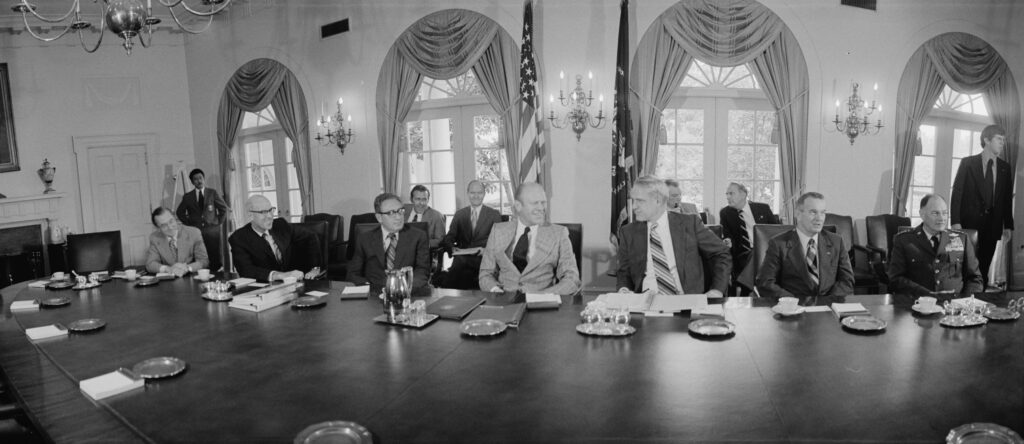
I concluded that since deterrence lives in the minds of American adversaries (not to mention Western allies and partners when it comes to extending deterrence and maintaining alliance cohesion), nuclear warfighting strategies were essential to shoring up the overall American military posture and far-flung Western security architecture. American strategic logic, or American notions of strategic stability and fears of spiraling arms races, did not count for much if Washington was trying to shape the Soviet Union’s and Western Europe’s distinctive perceptions. Schlesinger’s big contribution to American strategic thought was the understanding that unique national cultures and organizational proclivities had upended the notion that the deterrence balance functioned as a self-regulating system. He understood that the Soviets were competing, they believed in this notion of strategic superiority, so the United States must compete efficiently and effectively in the strategic nuclear balance. In a period of relative decline like the 1970s, U. S. strategic planners had to prioritize the areas of the nuclear deterrence balance where they could turn momentary strengths into lasting advantages. In the second half of the Soviet-American strategic arms competition, American comparative advantages included the nascent precision-guidance revolution, the gradually emerging reconnaissance-strike complex, and the budding capacity to conduct limited nuclear operations. Schlesinger understood that nuclear-arms stability was just one goal among many—planners would have to make tradeoffs with the equally important goal of imposing disproportionate costs on the Kremlin. I argue that Schlesinger’s strategic sensibility, which emphasized locking in a nuclear edge over the Soviets, illuminates the way the Reagan administration achieved the negotiated surrender of the Soviet Union.
Kyle Balzer is an American in the World Consortium postdoctoral fellow at the Clements Center for National Security. He received his PhD from Ohio University (2022), studying diplomatic and military history.
The views and opinions expressed in this article or video are those of the individual author(s) or presenter(s) and do not necessarily reflect the policy or views of the editors at Not Even Past, the UT Department of History, the University of Texas at Austin, or the UT System Board of Regents. Not Even Past is an online public history magazine rather than a peer-reviewed academic journal. While we make efforts to ensure that factual information in articles was obtained from reliable sources, Not Even Past is not responsible for any errors or omissions.
